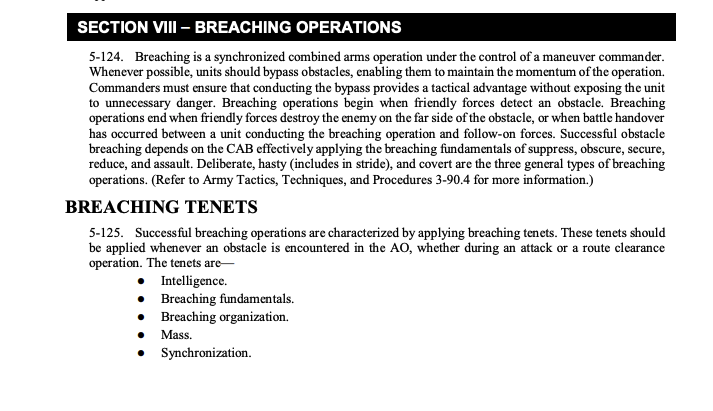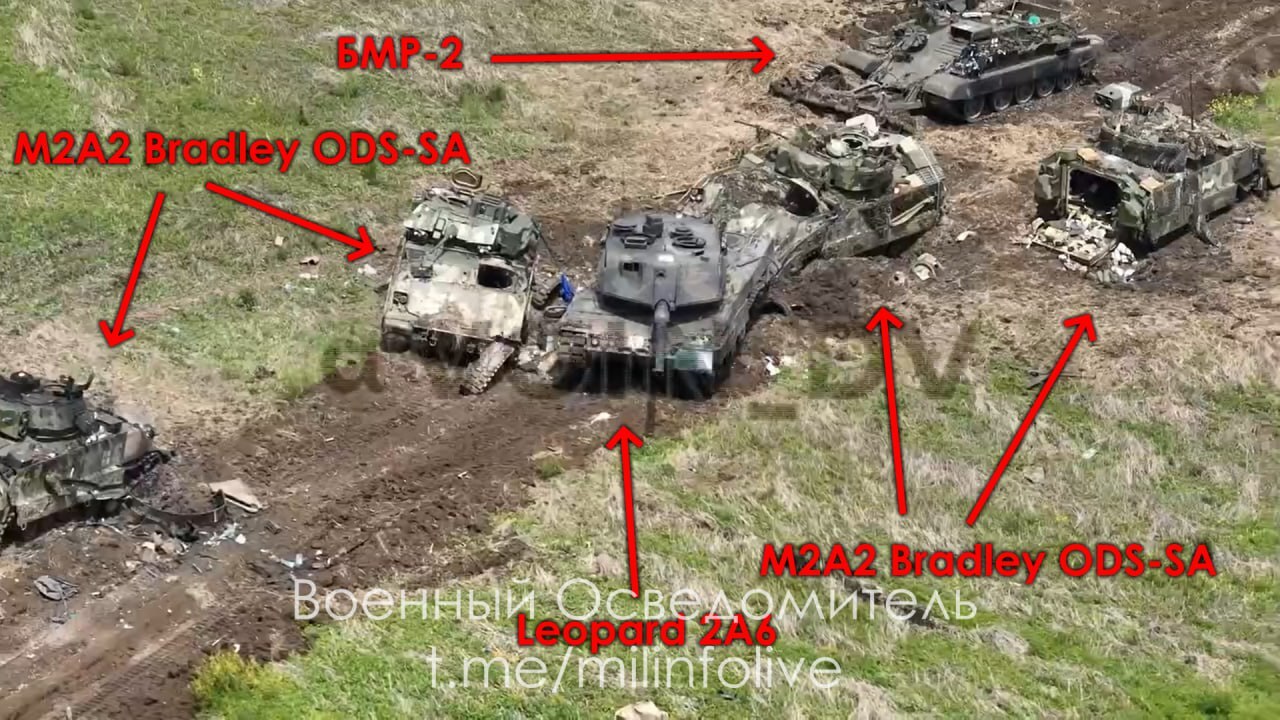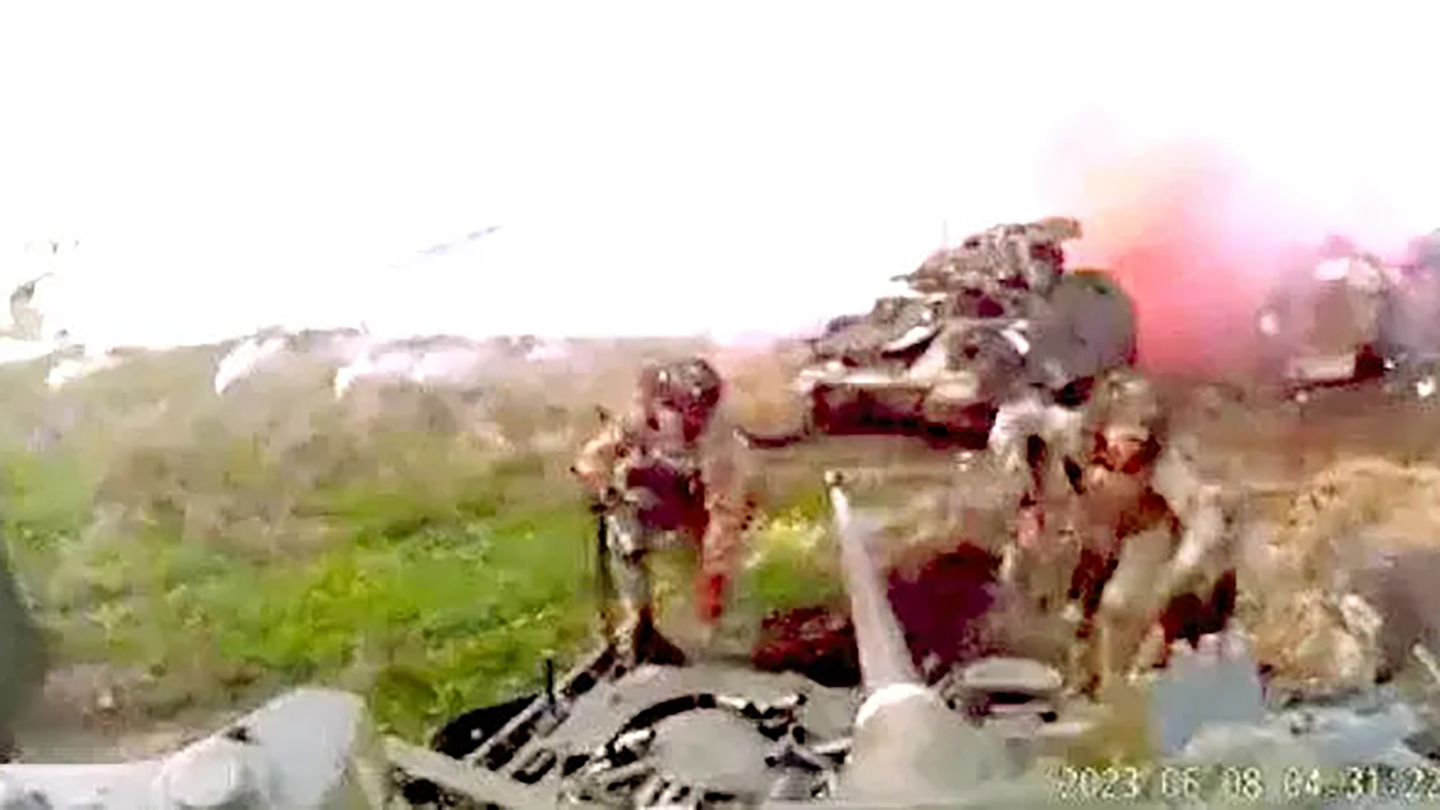The Ukrainian officer tasked with sending Bradley Fighting Vehicles on the breaching mission south of Mala Tokmachka in Zaporizhzhia Oblast last week faced a horrible decision. Does he leave his marooned troops to fend for themselves or risk more lives and equipment to try to rescue them?
What we know from a limited amount of widely disseminated imagery is that a platoon of four U.S.-donated Bradleys had apparently already been damaged or destroyed, along with a Leopard-2 tank and two demining vehicles, in a well-prepared Russian minefield. You can read more about that in our initial coverage of the incident here.
It was the first confirmed damage to Bradleys during this conflict. And it happened during one of the most dangerous and complex maneuvers possible — a breaching operation. Making matters worse, it was conducted without air support and questionable suppressive artillery fire.

In addition to some of their vehicles running over mines and in some cases apparently being hit by anti-tank guided missiles, the troops inside were on the receiving end of overwhelming Russian direct and indirect fire from both sides. This is according to an analysis conducted at the behest of The War Zone of that imagery by an expert with years of armor operations and Bradley tactics experience.
Since our initial story came out, and additional imagery emerged of the incident, the armor expert told us that from what he observed, it looks like a third platoon of Bradleys attempted to come to the rescue. The first, he thought made it through the area before the second got bogged down and attacked.
But as the company commander would have been taught during intensive training at the Grafenwoehr Training Area in Germany, sending another platoon of four Bradleys into that killzone would have violated basic doctrine for such operations, the expert told The War Zone.
You can see in this video below that’s apparently just what happened – four additional Bradleys were damaged or destroyed after arriving at the same location, seemingly to help rescue the stranded group.
“If it puts at risk your soldiers and your equipment – the resources available for future action – then you would not assume the risks and we already saw that the risks were high,” said the official, speaking anonymously to discuss operational details. “We saw that they could not accomplish their mission. And to put more people out there at a high-level risk would not be worth the costs.”
But that doesn’t take into account the human factor in the heat of battle, the official said.
“The other aspect too is you never want to leave someone behind,” said the official. “This is one of those universal battlefield dynamics that has never changed from the start of warfare when we started killing each other.”
Asked what he would do if he were in charge of the operation, the official said his first instinct would be to make a similar decision.
“Initially, when I hear the screaming going on and the request for help, to provide assistance and recover potential casualties and equipment, my first reaction would be to send them in,” said the official. “But after a minute or two and thinking logically about it, I would have concluded that the risks were too high.”
From looking at the available images and video, the expert concluded that the second platoon’s advance likely ground to a halt after the lead breaching vehicle either struck a mine or suffered a mechanical problem. But contrary to some commentary, the expert said that it appears under the circumstances the Ukrainians performed as well as could be expected and as close to established doctrine as possible.
Images emerging from the main portion of this engagement – showing four damaged or destroyed Bradleys, one damaged Leopard-2 tank and two damaged demining vehicles – showed that the Ukrainians were following doctrine when they entered the killzone, the expert told us.

“Did they execute the breach operation according to doctrine based upon what I saw and the resources they had on hand? I would presumably say yes,” he said. “Because they were falling behind a breach vehicle. They had a tank that was right behind it for protection and they had infantry support right behind covering sectors of fire.”
The expert told us his impression was further reinforced by the actions seen in a video apparently taken from the viewpoint of a Bradley firing its 25mm Bushmaster main gun.
It fires four or five rounds of suppressive fire at a treeline in the distance, then pauses as another Bradley quickly passes by, apparently withdrawing from the killzone. The firing Bradley then resumes hitting Russians as a second retreating Bradley comes into view. At about the 12-second mark, there is a bright flash followed by the second Bradley coming to a halt, apparently it hit a mine, the expert said.
Ukrainian troops are then seen being shielded by the stricken Bradley. They release at least one smoke grenade to screen their activities while the still-operable Bradley continues scanning the treeline for Russian threats.
A second video clip shows the Ukrainian troops climbing aboard the operable Bradley.
Another video purports to show Ukrainian soldiers after their Bradley was hit by anti-tank guided missiles and a landmine.
While what happened after the video ends is unknown, the expert said those troops showed they used what they were taught about combined arms maneuver.
“These guys are now withdrawn from the breach site to suppressive fire and you’re seeing the crews act, reacting correctly,” the expert said. The dismounted troops tossing the smoke grenade and the operable Bradley crew using its advanced optics to scan for threats “shows these guys were well-trained,” the expert said.
Still, it appears that the Russians got close to the vehicles. What happened to them remains unknown.
Aside from there being limited visual information about this particular incident and no official comment, this is not an omen for the outcome of Ukraine’s counteroffensive, the official told us.
During preparation for such situations at the National Training Center at Fort Irwin, U.S. troops using U.S. equipment typically fail in their first crack at these high-risk operations, the official said.
“You get jacked up all the time,” said the official, adding that about “90% of breaches that we do for the first time [in training] are failures.”
Given that and the limited amount of information available about this incident – either in terms of visual confirmation or official comment – the expert says no real conclusions can be drawn about what this incident portends for the future of Ukraine’s counteroffensive.
But it certainly shouldn’t be used as a clarion call to end shipments of Bradleys – the U.S. has donated 109 M2A2-ODS Bradley variants and four B-FIST variants – to Ukraine, he said.
“Give these guys a chance,” he said. “Their cherry got popped. They are actually fighting real Russians instead of fake Russians that we trained against.”
According to its latest tabulation, the Oryx open source intelligence group says that Ukraine so far has lost 16 Bradley M2A2 ODS-SAs – five destroyed, and 11 damaged and abandoned. The group only counts those vehicles for which is has visual confirmation, so the real numbers could be higher.
But it appears the Pentagon doesn’t see this incident or other Bradley losses as a reason to tighten supplies.
According to Voice of America, the Pentagon will announce a new aid package that will include an unspecified number of Bradleys, as well as Stryker Armored Vehicles, to replace those lost on the battlefield. While the U.S. donated 90 Strykers, Oryx has yet to list any as damaged or destroyed.
There is no doubt that we will see more donated weapons damaged or destroyed on the battlefield, such is the nature of war. Whether Ukrainians learned lessons from this incident is something we will be watching for as the counteroffensive continues.
Contact the author: howard@thewarzone.com
